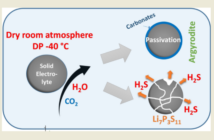Researchers at Brown University in Providence, Rhode Island used computer simulations to track the flow of air in vehicles. They found ways of using airflow to reduce infections in autos that were contrary to what they expected. Their discoveries may be helpful when designing airplanes, buses and subway coaches in future too.
Counter Intuitive Ways of Using Airflow to Reduce Infections in Autos
The team used computer simulations to represent airflow inside a compact car, with various combinations of windows open or closed. The concentrations of airborne particles the driver and passenger exchanged reduced ‘dramatically’, the more windows were open. But turning the ventilation system on high did not circulate the air ‘nearly as well’.
However, the ‘worst scenario’ they simulated was with all windows tightly closed, and the aircon or heat turned up high. Conversely, the most effective way of using airflow to reduce infections in autos was having all windows open. Having one or two open helped, they said. But the effect was not as significant.
However, This Is Not Sufficient to Eliminate Infection Risk
The Brown University report published on December 4, 2020. In it, the researchers say it is still safer to stay at home and not travel at all. Their computer model, loosely around a Toyota Prius had a driver, and one passenger diagonally across at the rear. This maximized their spacing in a virtual vehicle moving at fifty miles per hour.
Opening more windows increased the rate of air exchanges, and this diluted airborne particle concentrations. Aerodynamic airflows around a moving vehicle are at higher pressure at the rear, than at the front. As a consequence, the air tends to enter through the back windows and exit at the front.
This effect creates two separate airflows with all four windows open, the researchers found. Opening windows closest to occupants carried a higher risk than opening those opposite them. The report author believes the Brown University study is ahead of the curve of our understanding of micro climates in autos.
Related
Scientific Opinion About the Virus and Masks
The Coronavirus Can Be Spread in Particles
Preview Image: Open Windows on Opposite Sides




